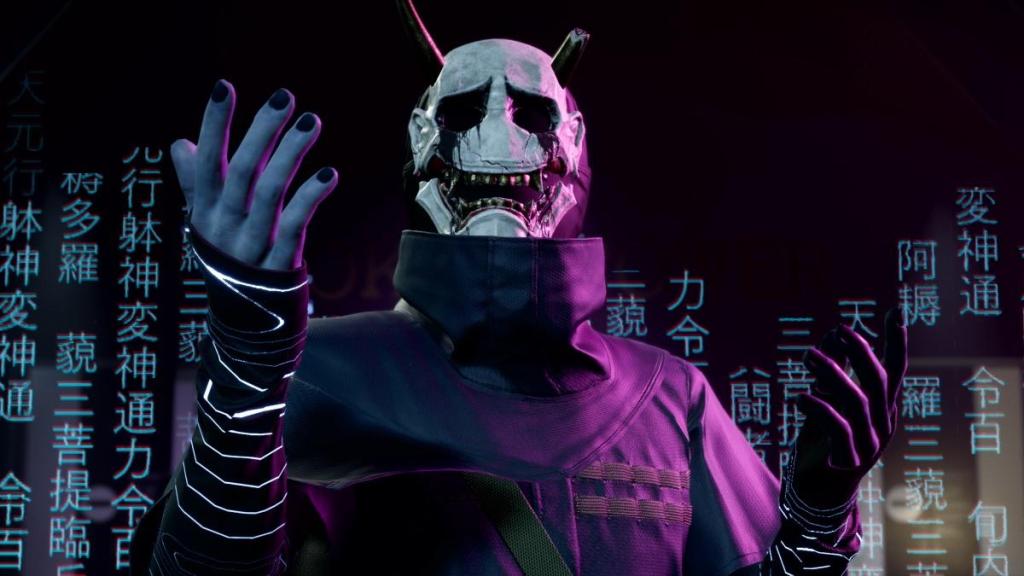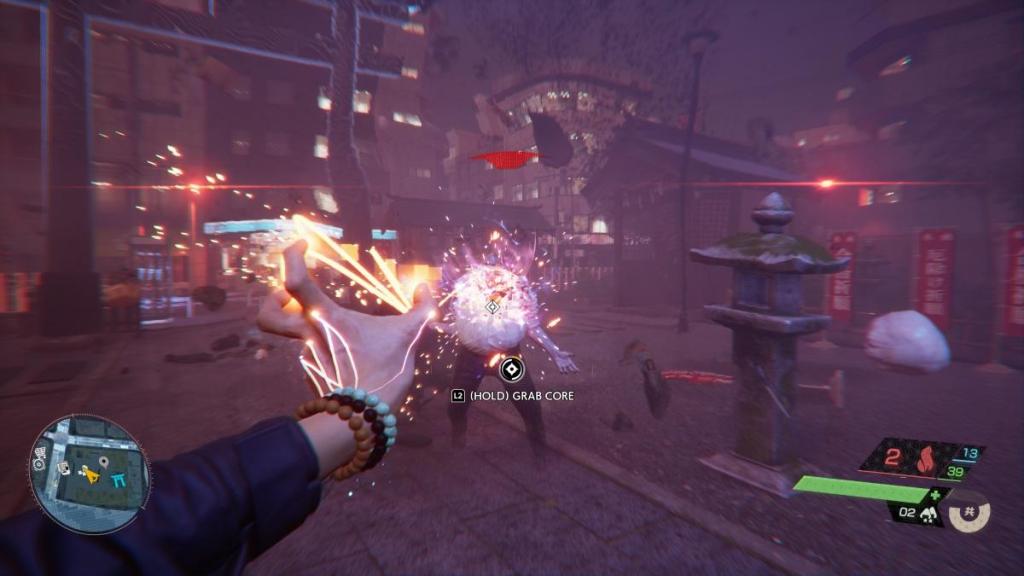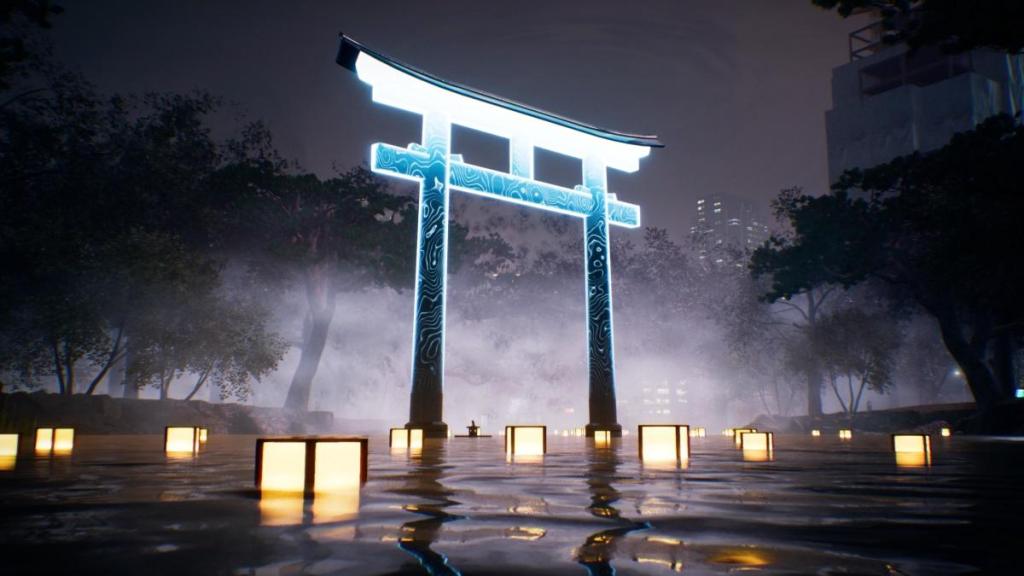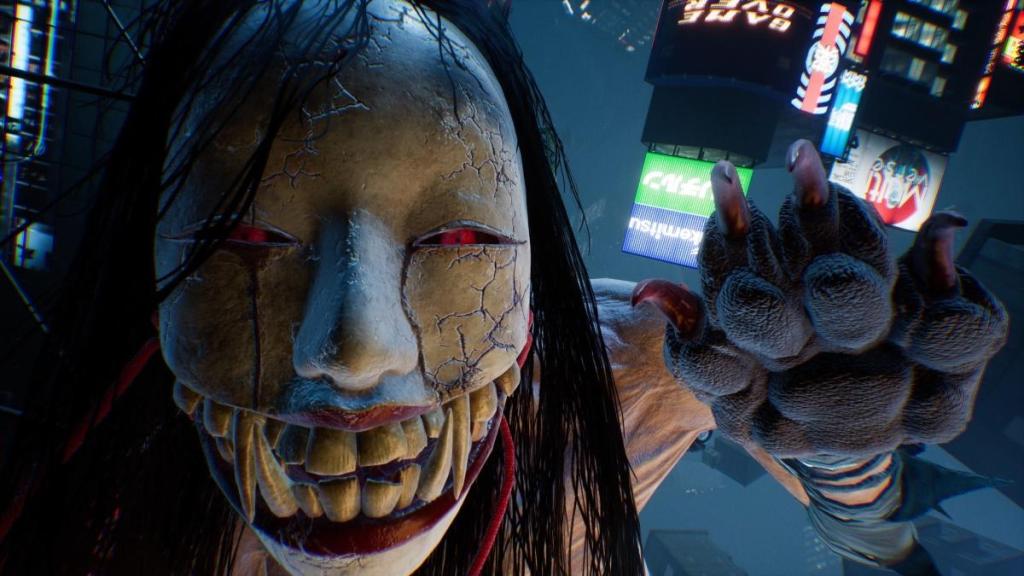Roughly six hours into Ghostwire: Tokyo, it has become apparent that the title is a little bit of a hodgepodge of different mechanics across genres all tied together in order to be greater than the sum of its parts. I’d thought I was exhausted of Assassin’s Creed-style exploration, for example, but it turns out that all I really wanted was for the actual environment to be interesting. The ghostly streets of Tokyo have plenty to do, and shockingly, I was happy to oblige.
Videos by ComicBook.com
The premise of Ghostwire: Tokyo is that the people of, well, Tokyo have disappeared thanks to a mysterious fog rolling in that allows ghostly Visitors, which are basically angry spirits, to populate it instead. Not all of these spirits are enemies, but even the more friendly ones aren’t always benign. Akito, the player character, gets inhabited by a dead hunter of these Visitors called KK at the very start and off the two of them go to take on Hannya, the man behind it all.

Despite KK’s presence allowing Akito to largely avoid the dangers of the fog, there are heavier areas of it that still cause damage whenever they are bumbled into. Clearing areas of fog is accomplished by cleansing various torii gates around Tokyo in a similar manner to how Assassin’s Creed typically reveals the map through climbing towers. Unlike Assassin’s Creed, however, there’s basically no way to avoid a fight in the process, and the revealed areas of the map are both spooky and littered with enemies and possible friendlies.
Combat in Ghostwire: Tokyo can be pretty intense, but only if you allow it to be. The majority of fights revolve around using a set of supernatural Ethereal Weaving abilities to damage enemies at a distance, and once Visitors have been hurt enough, their cores become exposed. Depending on how many shadowy critters are swarming you, it becomes a game of figuring out the timing on everything in order to keep them away, making sure you destroy cores when available, and juggling how many more shots you have left. Thankfully, defeating enemies provides more ammo for Ethereal Weaving, so there is always a reason to unload hard and fast rather than conserving everything for a potential boss fight.

As more abilities are unlocked and more difficult enemies start showing up to play, the complexity ratchets up, but it never quite gets too overwhelming. There’s relatively little here in terms of straight-up horror, but the tension and suspense of trying to sneak through a shrine in order to cleanse a gate before too many enemies are alerted is plenty thrilling. And even if they are, players are well equipped to deal with them.
All of this is in service to defeating Hannya, but KK and Akito have different reasons for wanting to get involved. Akito’s sister, Mari, is targeted by Hannya for some kind of ritual while KK seems to have both personal and professional reasons for wanting the architect of Tokyo’s current situation taken down. I have no idea how much is actually left of Ghostwire: Tokyo, but two chapters in it feels like I’ve only begun to scratch the surface.

Speaking of just scratching the surface, my initial impressions from a hands-off preview earlier this year proved completely accurate; Ghostwire: Tokyo is the kind of video game that seriously benefits from actually playing it rather than simply seeing it. The various trailers and screenshots don’t really provide enough insight into how involved combat can get, the impressive set dressing across the entire area, or just how much verticality is involved. Yokai called tengu litter Tokyo following the fog, and by grappling them Akito can zoom onto the tops of buildings and then glide around to others. There is honestly a frankly surprising amount of climbing in Ghostwire: Tokyo.
And that’s the overwhelming feeling that Ghostwire: Tokyo has left me with thus far: surprise. I’m surprised at how much I like wandering around an abandoned Tokyo, which is full of little touches that make it feel alive despite Akito being the only living person around. I’m surprised how much fun accomplishing small tasks for spirits and liberating relics is given how much I often hate open-world clutter. In a world where video games are constantly coming out and it can be difficult to determine where to spend your time, Ghostwire: Tokyo will pleasantly surprise you if you let it. Whether that holds true over dozens of hours, however, remains to be seen.

Ghostwire: Tokyo is scheduled to launch for the PlayStation 5 and PC on March 25th. Anyone who pre-orders the digital Deluxe Edition of the video game via the PlayStation Store will also be granted early access starting March 22nd. The recently released — for free — prequel visual novel, Ghostwire: Tokyo – Prelude, is currently available on the PlayStation 5 and PlayStation 4 for anyone that wants to learn more about the full video game ahead of release. You can check out all of our previous coverage of the upcoming video game from Tango Gameworks and Bethesda right here.
This preview was done with PS5 code provided by the publisher.








